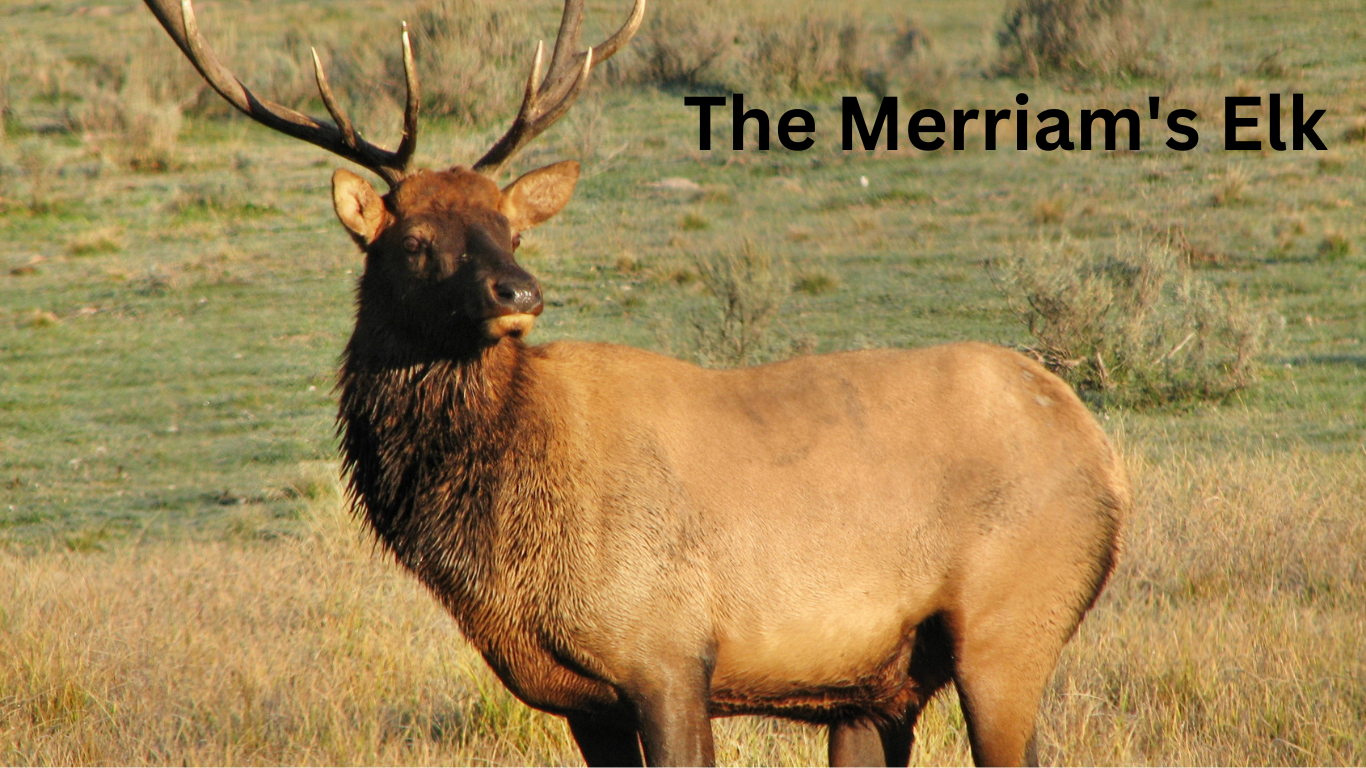An awe-inspiring and gorgeous subspecies of, this (Cervus canadensis merriami) once graced the American Southwest’s rocky landscapes. Their tragic tale serves as a sobering reminder of the devastating effects that humans may have on even the hardiest of animals.
Living in Dry Regions
With its more diminutive stature, whiter coat, and unique lyre-shaped antlers, Merriam’s elk was easily distinguished from its northern relatives. Able to traverse narrow gorges and subsist on limited plants, it was an ideal fit for its dry environment. These incredible animals were an integral part of the ecosystem in the highlands and deserts of Mexico, Arizona, New Mexico, and Texas.
In a Heartbreaking Ending
This population dramatically changed when Europeans arrived in the late 1800s. The fast growth of farms and ranches and the unchecked hunting that followed wiped off their numbers. Even more difficult was that they had to contend with cattle for scarce resources like water and food. The wild tapestry of the Southwest was emptied of its last known this by 1906.
A Tribute Preserved
Even though Merriam’s elk are extinct, their legacy will continue thanks to conservation and research. Researchers are analyzing its fossils to learn more about its particular adaptations and the causes of its demise. Other endangered species’ conservation plans are shaped by this information.
Things We Learned
An important lesson from this story is the precarious equilibrium between human endeavors and the natural environment. It stresses the need for eco-friendly procedures and ethical animal control to preserve Earth’s rich variety of life.
Looking Ahead with Confidence
Even though this may never again roam the Earth, their legacy lives on. Reintroducing similar elk subspecies into portions of their old habitat aims to bring ecological equilibrium back to some extent. Hope for the future of animal conservation can be found in these endeavors, which are shaped by the lessons learned from Merriam’s elk’s downfall.
A Tribute to the Magnificent Merriam’s Elk and Answers to Common Questions Regarding It
First Question: What sets this Apart From Its Other Subspecies?
A1: Merriam’s elks were easily identifiable by their diminutive stature, lighter coat, and lyre-shaped antlers. Its ability to traverse steep valleys and subsist on scant plants allowed it to adapt uniquely to the dry terrain of the American Southwest.
Question 2: Why did the Merriam’s elk population drop?
Question 2: In the late 19th century, European settlers engaged in unregulated shooting, which led to the collapse of the Merriam’s elk population. The fast expansion of ranches and farms contributed to habitat degradation and increased competition for water and food supplies.
The third question is: when was the last time people thought Merriam’s elk had died?
A3: It was thought that the last Merriam’s elk had died out by 1906, a sad day for this magnificent subspecies.
Question 4: What measures are being taken to keep the Merriam’s elk brand intact?
A4: Conservation and research ensure that Merriam’s elk are remembered and preserved. Researchers examine its bones to learn about its particular adaptations to better conserve other endangered species.
Question 5: Is anyone currently working to bring elk back into the areas where Merriam’s elk once lived?
Answer 5: Parts of the Merriam’s elk’s old range are being considered for reintroduction by kindred elk subspecies. Insights from the Merriam’s elk extinction crisis guide these efforts to reestablish ecological harmony.
Question 6: What are the takeaways from Merriam’s elk tale?
Answer 6: Merriam’s elk story is a cautionary tale about how important it is to balance the natural environment and human activities. It highlights the significance of eco-friendly methods and conscientious animal control in protecting biodiversity.
Is the Merriam’s elk’s extinction a cause for optimism in animal conservation efforts?
Answer 7: The future of protecting wildlife is bright. Conservation efforts and the reintroduction of related elk subspecies, guided by the lessons learned from Merriam’s elk’s decline, promise to reestablish ecological harmony and safeguard biodiversity.
Question 8: What role may citizens have in protecting wildlife and avoiding such tragedies?
The eighth point is that people may help with wildlife conservation by participating in conservation efforts, supporting sustainable practices, and speaking out for responsible wildlife management. To avoid future losses of this kind, it is essential to increase public understanding of the significance of biodiversity preservation.
Remember the enduring strength and gracefulness of Merriam’s elk as a symbol of our duty to preserve the environment for future generations. For future generations to enjoy a planet that is habitable by all living things, we need to reflect on our mistakes and figure out how to fix them. A wilder, more prosperous future awaits us; let the Merriam’s elk symbolize our dedication to conservation.
